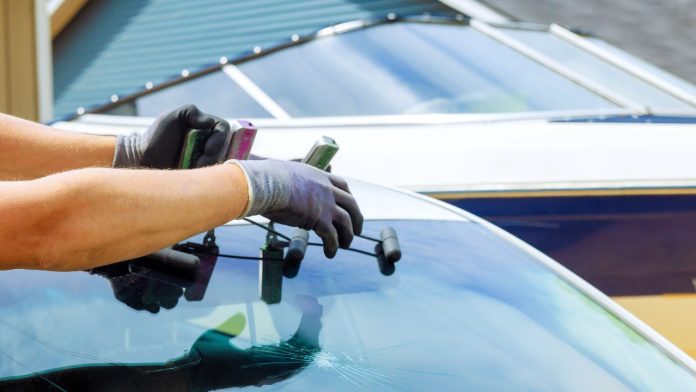Bangkok is a world-class city with third-world road headaches. Between dense traffic, construction churn, and tropical downpours, your windshield takes more abuse here than in most places. If you’ve noticed chips and cracks showing up “out of nowhere,” it isn’t bad luck—it’s the environment. This guide explains what’s happening, how to prevent damage, and what to do when it occurs.
The Perfect Storm: Why Bangkok Is Tough on Glass
1) Micro-debris from construction and heavy vehicles
Pervasive roadworks, dump trucks, and pickups shed sand, fine aggregate, and stray bolts. Small projectiles at highway speed act like tiny bullets against laminated glass.
2) Sudden braking and tight following distances
Stop-start driving compresses space between cars. Gravel kicked up by the vehicle in front has less distance to decelerate—so it hits your windshield harder.
3) Potholes, steel plates, and expansion joints
Impacts that jolt the chassis transfer stress to the windshield, especially near the edges. That’s where cracks often start and then creep.
4) Tropical heat + monsoon rain = thermal shock
Scorching midday sun heats the glass; a burst of cold rain or a maxed-out AC vent on the glass can create stress differentials that turn a tiny chip into a long crack.
5) Accessory installs & ADAS cameras
Dashcams, toll readers, and aftermarket films installed without care can apply point pressure or leave the glass unsupported at the edges.
6) Low-quality or aged wiper blades
Hardened blades trap grit and grind micro-scratches. Over time, etched tracks weaken the outer ply and scatter glare at night.
How Windshield Damage Usually Starts (and Spreads)
- Impact point: A stone creates a chip (bull’s-eye, star, or combination break).
- Moisture & dirt ingress: Water and dust contaminate the PVB layer; repairs become weaker.
- Stress propagation: Heat, chassis flex, and bumps turn the chip into a run (a line crack).
- Edge sensitivity: Cracks that start within ~5–7 cm of the edge spread faster due to frame stress.
Prevention for Bangkok Drivers (Practical, Not Preachy)
Drive tactics
- Keep an extra car length behind trucks, pickups with uncovered loads, and buses.
- Avoid the “spray cone” behind construction vehicles; change lanes or hang back.
- Don’t blast the defroster or AC directly at scorching glass; let temps equalize first.
Car care
- Replace wiper blades every 6–12 months; clean the edge with a damp cloth monthly.
- Choose a high-IR, low-reflectivity front film to cut cabin heat without warping ADAS performance.
- After rain, avoid hammering through potholes/steel plates; slow to reduce shock.
Parking
- Shade > direct sun when possible. A cooler cabin lowers thermal stress after start-up.
Chip vs. Crack: When to Repair, When to Replace
- Repairable: Chips under a coin size, clean impact point, not in the driver’s direct line of sight, not at the very edge. Fast resin injection can halt spread and restore clarity.
- Replace: Long cracks, edge cracks, or any damage affecting ADAS camera zones or structural bond areas.
Time matters: The first 24–72 hours after a chip are critical. Seal/repair before moisture and dust contaminate the break.
Choosing the Right Replacement in Bangkok
- OEM-grade laminated glass: Ensures correct curvature and optical quality for cameras/HUDs.
- Proper urethane & primer system: The bond is part of your car’s safety cell—don’t accept generic silicone.
- ADAS calibration: If your car has lane/auto-brake cameras, insist on post-install calibration.
- Clean room habits: Dust and humidity control during installation reduce future stress points and squeaks.
Common Myths (Bangkok Edition)
- “Darker tint = cooler glass = fewer cracks.”
Not always. What matters is IR/TSER performance and optical stability, not darkness alone. - “Any glue works if the installer is careful.”
No. Only automotive-grade urethane with the correct primer chemistry provides crash-worthy adhesion. - “A small chip is fine to ignore.”
In Bangkok’s heat/rain cycle, small chips often become cracks within weeks.
What To Do Right After You Hear the Ping!
- Photograph the chip (include a coin for scale).
- Cover with clear tape to keep out moisture/dust until repair.
- Avoid extreme temps (no hot car washes, no AC blasting on glass).
- Book a same-week repair—faster, cheaper, and safer than a full replacement.
About the Author / Local Expert
GFIX Auto Glass Specialist (Bangkok) helps drivers prevent and solve windshield issues in Thailand’s toughest conditions—OEM-grade glass, factory-spec urethane, and ADAS-aware installs backed by warranty.
Learn more or book a consultation: Bangkok windshield repair & replacement








